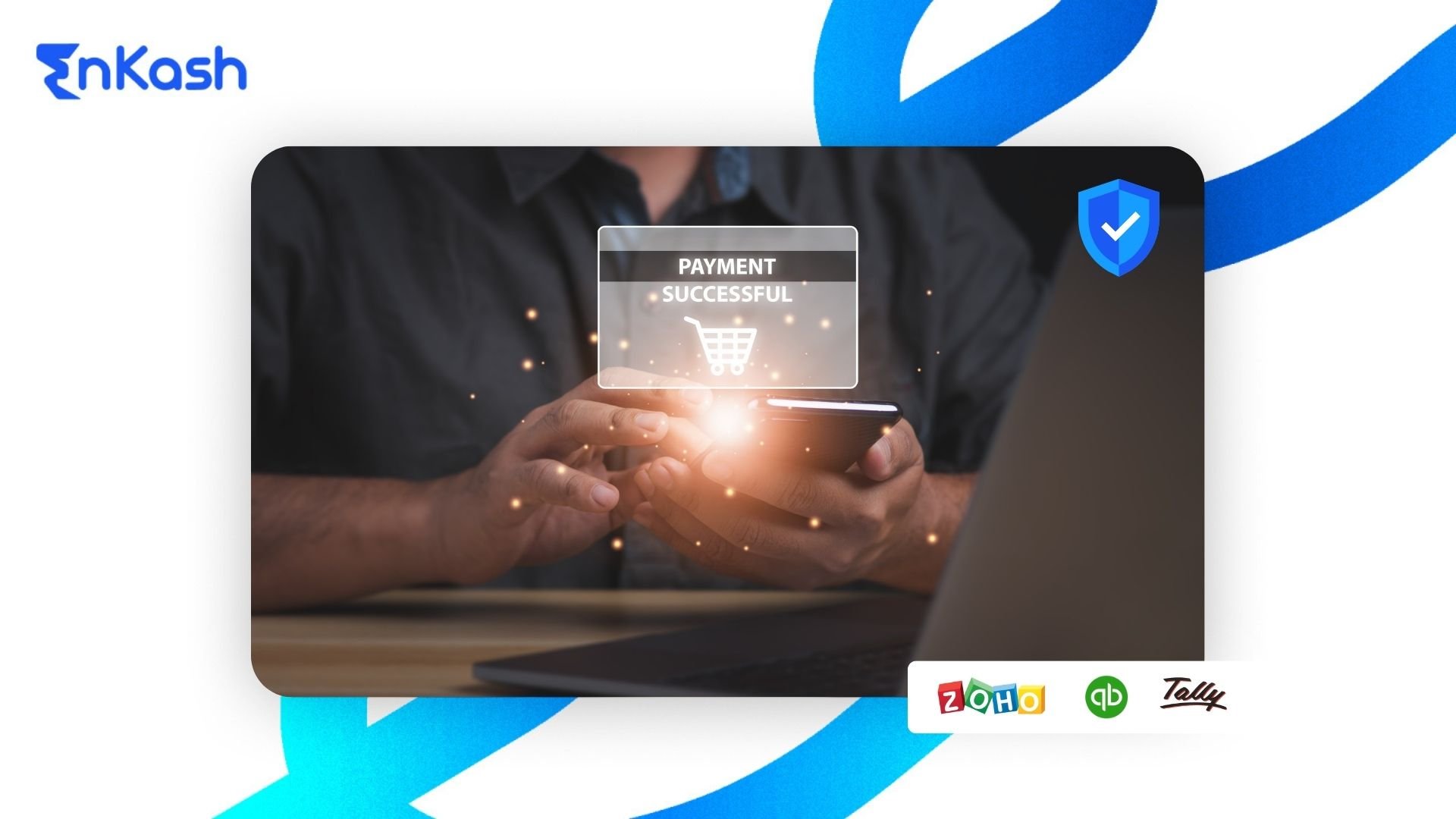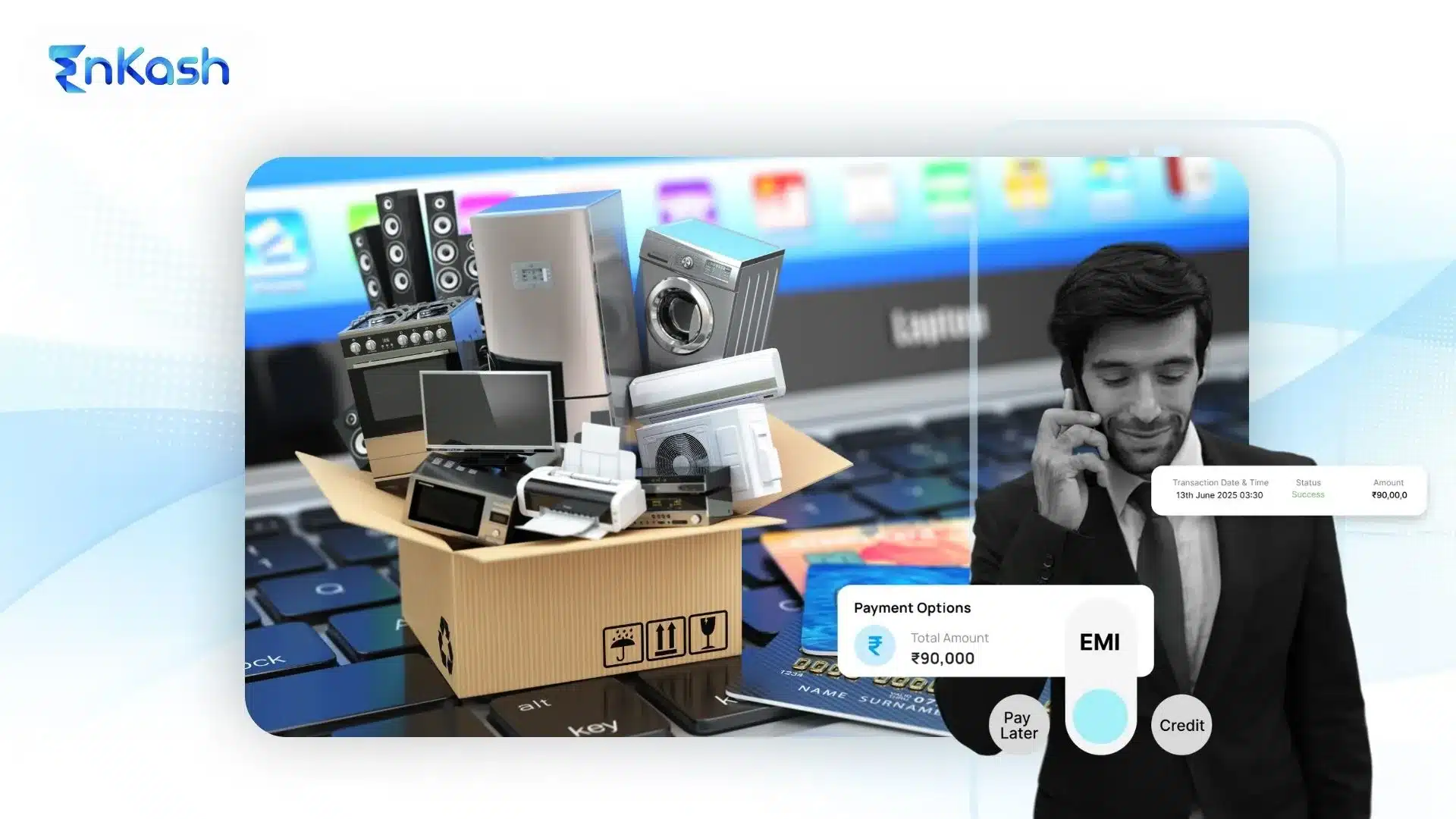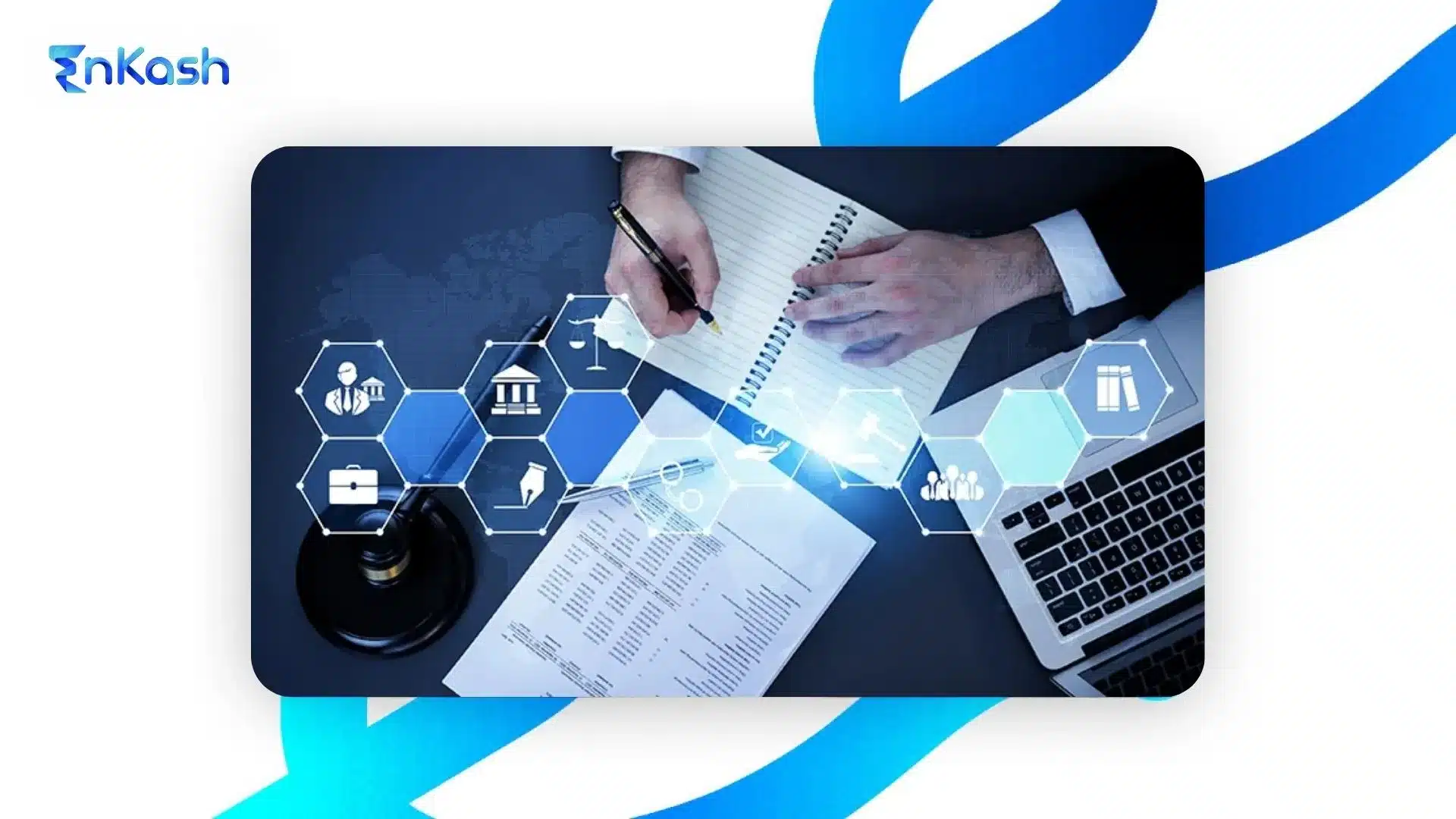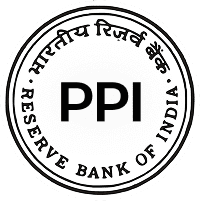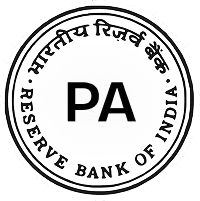What Works (and What Doesn’t) When Accepting Payments in India
Running a business in India today means figuring out payments just as much as figuring out the product or service. Not just how to accept them, but which method makes sense, what the actual charges are, and whether it’s even secure or just sounds fancy.
The options can feel endless, QR codes on the counter. Card machines that need signals to work. Wallets, apps, websites, and international payments all pull in different directions. And the deeper one goes, the more complex it becomes. Other rates, settlement delays, plugin errors, and technical stuff that often don’t come with clear answers.
Payment systems have become both simpler and more complicated at the same time. For small and mid-sized businesses across India, the challenge is no longer just “how to go digital,” it’s about doing it without leaks in money, without chaos in the backend, and confusing customers.
Online Payment Systems in India
When businesses first go digital, the biggest question isn’t just about the best option, it’s more about understanding what’s even available. Because not every payment method fits every business.
What works for a local food stall may not work for a tutoring website. What works for digital freelancers might be too slow for shops doing hundreds of transactions daily.
So, before deciding which gateway to pick or how to integrate one, it is better to know the actual types of online payment systems Indian businesses commonly deal with.
Common Gateways:
UPI (Unified Payments Interface)
This one’s everywhere, “from chai stalls to online stores”. It’s fast, cheap, and widely used. Payments land directly in the bank accounts, and the transaction cost is usually the lowest. For many businesses, UPI payment is the default option, especially when dealing with local customers.
Cards (Credit, Debit, Prepaid)
Still widely used in urban retail, ecommerce, and services. Customers paying high-value bills often prefer cards. But card payments come with extra fees, often between 1.5% to 2.5%. Some businesses feel this pinch more than others.
Digital Wallets
These are apps where customers load money first, then spend. It is useful for quick payments or cashback-driven buyers. However, wallets come with limits both for users and for merchants trying to withdraw funds or settle them into a bank.
Netbanking
Still preferred by certain customer segments, older generations, government services, or when UPI fails. Not the fastest, and not everyone remembers their login details. But it’s a fallback option for many.
EMI & Buy Now Pay Later (BNPL)
Gaining ground among younger consumers or those buying products above ₹2000. If a business sells electronics, courses, or services priced a bit higher, offering EMI or BNPL can make a difference. But it also involves more documentation and approval steps.
Understanding Charges: What It Costs to Get Paid Online
So once a business decides on using a payment gateway, the next question usually isn’t about design or interface, it’s money.
How much does it cost to get paid online?
This is where things often catch business owners off guard. Because while the customer pays full price, the amount that finally hits the business bank account is less. This is called the gateway charges per transaction.
Every payment method inside the gateway comes with its own cost. Some are straightforward, others have layers. It’s easy to miss them unless they’re being tracked closely.
The most common ones:
UPI Payments
- Seen as “free,” but that’s not always the case.
- Peer-to-peer might still cost nothing.
- But for businesses, some setups have started charging between 0.5% to 1.1%, depending on value slabs.
- Many still offer UPI with no fees, but this may change depending on volume or policy shifts.
Cards (Credit, Debit, Prepaid)
- Cards are reliable, but they come with the highest cost.
- Typical charges sit around 1.5% to 2.5%, sometimes more for premium or international cards.
- Prepaid cards issued under Indian PPIs have similar ranges.
- This fee is on every transaction, not just the big ones.
Digital Wallets
- Convenient for consumers, but charges hover between 1% to 2.5%.
- Some wallets also add a fee when businesses request instant settlement into their bank account.
- Wallet limits and KYC issues can cause operational hiccups if not checked.
Netbanking
- Still used by many who don’t prefer mobile-based apps.
- Comes with around 1.5% to 2% charges.
- Slightly slower and has more failed transactions due to login errors or timeouts.
Buy Now Pay Later / EMI
- These come with a premium cost, usually 2.5% to 4%.
- Useful for higher ticket items, but not ideal for daily low-ticket sales.
- Also involves more complex refund and settlement structures.
International Payments
- Easily the most expensive category.
- Charges go from 3% to 5%, plus currency conversion charges, foreign bank charges, and compliance costs.
- Ideal only for export-focused businesses, not for domestic-facing ones.
What is a free gateway?
Many people think ‘zero-cost’ payment setups mean you pay nothing at all. But really, it just means you don’t pay to get it set up. You’ll still have to pay for every sale you make.
Many platforms waive the gateway price upfront to onboard merchants, but quietly deduct higher percentages later. And that’s where most surprises happen, not because of fraud or hidden terms, but because businesses often assume the gateway is free across the board.
Small Numbers, Big Impact
Even a 0.5% change in transaction cost can mean thousands lost annually, especially if the business is high-volume. This is why it’s essential not just to look at the front page of a gateway’s pricing but also at:
- Refund charges
- Chargeback penalties
- Settlement delays
- Tax (18% GST on fees)
- And minimum payout limits
Hidden Charges: The Silent Leak in Business Payments
Most payment gateways don’t exactly lay all their cards on the table. Charges look clean on paper, but once transactions begin to flow, a few extras quietly sneak in. And for many small or mid-size businesses, that’s where profit starts leaking.
A business might agree to a 2% MDR (Merchant Discount Rate), but later discover there’s a platform handling fee for every transaction. Or that refund charges apply even when the customer cancels within minutes. Some even charge for monthly settlement summaries or dispute handling, which is not always mentioned upfront. It sounds small, but over a year, it adds up.
In India, these charges usually fall into grey areas. The RBI doesn’t cap every kind of platform fee, though it does regulate MDR for specific instruments like RuPay debit cards or UPI (which, for many merchants, still carry zero or very low fees).
Still, payment gateway contracts often include terms that allow discretionary charges. And not everyone reads the fine print. Most are just in a hurry to get online and start accepting payments.
So, how can a business avoid this trap?
A few basic checks that help:
- Always request a breakup of every fee and not just MDR, but refund processing, chargeback penalties, API usage, settlement delays, SMS alerts, etc.
- Ask upfront if UPI and RuPay cards are charged or not. Many platforms offer zero-fee UPI, but some quietly route it through wallet rails which aren’t free.
- Double check refund timelines and costs. If a customer is refunded, does the platform also refund your MDR or do they keep it?
- Review your monthly settlements. If the numbers look off, ask questions. Many businesses never check unless there’s a visible drop in income.
Also, be wary of free trials that auto-convert into paid services. Some platforms offer “premium dashboards” or “AI-driven insights” for free the first month and charge for it from the next cycle.
It’s not always foul play. Sometimes it’s just poor disclosure. But either way, businesses have the right to full clarity.
How to Integrate a Payment Gateway in a Website
Once the gateway is chosen and the pricing is clear, the next big step is getting it all to actually work on the website.
And this is where many businesses either hand it off to a developer without fully knowing what’s going on, or they pick the “easiest-looking” gateway and live with limitations later.
But integrating a payment gateway doesn’t need to be a headache. It just needs to be understood in simple parts.
The Two Most Common Paths
1. Plugin-Based Integration
Best for businesses using platforms like Shopify, WooCommerce, Magento, or similar site builders.
- Works like installing an app.
- Gateway provides a plugin or module.
- You install, enter API keys or credentials, and it’s live.
Ideal for: product sellers, subscription businesses, or service sites using common CMS platforms.
Pros: No code needed, quick to set up
Cons: Less flexibility, dependent on plugin updates
2. Custom API Integration
This is for businesses with custom websites or apps built from scratch (HTML, Laravel, Node.js, React, etc.).
- Requires a developer or tech team.
- The gateway gives API documentation (basically a manual).
- Your site’s backend sends payment data to the gateway, and the gateway responds with success/failure details.
Integration includes: authentication, payment page, callback/response handling, and sometimes refund or subscription logic.
Pros: Flexible, tailored to your experience
Cons: Needs development effort, ongoing maintenance
Read More: How to Integrate a Payment Gateway in a Website
What to Watch for During Integration
Test Environment First
Always run payments in sandbox mode (a fake environment) before going live. It helps spot bugs without risking real money.
Payment Success & Failure Handling
Don’t just show a “Thank you” page. Build proper messages for failed payments too, and make sure refunds (if any) get logged correctly.
Security
Avoid storing customer card or wallet data on your servers. Let the gateway handle it via encrypted channels (PCI DSS compliance takes care of this, but only if implemented right).
Mobile & Desktop Optimization
The payment flow should work across all devices. Some integrations break on mobile if not tested.
Settlement & Reconciliation Logic
Once the payment is successful, your system should store the transaction ID, amount, method used, and status. This helps when reconciling with bank deposits or when a customer raises a dispute.
How Safe Are Online Payments in India? What Businesses Must Know
It’s one thing to collect payments online. It’s another to make sure they’re 100% secure payments, not just for the customer, but for the business too.
There’s always a question that hangs quietly in the back: Is this payment system actually safe?
And it’s fair to ask, especially with rising scams, phishing, chargebacks, and fake refund requests becoming common.
No system is perfect. But India’s digital payment ecosystem has come a long way.
Thanks to RBI regulations, technical improvements, and stricter gateway practices, online payments today are much safer than even five years ago. But there are risks that businesses still need to understand, especially because not all of them come from hackers. Many issues come from:
- Integration mistakes
- Staff handling payment data casually
- Unsecured networks
- Or just poor follow-up when something fails
So, how safe is it?
Here’s what works in India’s favor:
PCI DSS Compliance
Most regulated payment gateways in India are PCI DSS compliant. This means they don’t allow raw card data to be stored or transmitted insecurely.
RBI Licensing
Only RBI-approved payment aggregators or payment service providers can legally handle merchant payments. This reduces fly-by-night operators from popping up.
Two-Factor Authentication
Almost all card and UPI transactions in India need OTP or biometric confirmation, which makes fraud harder compared to other countries.
Tokenisation for Cards
As per the RBI’s new rule, saved card details must now be tokenised. This means the actual card number is never stored and only a code that’s useless outside that system.
Instant Alerts & Logs
Every payment triggers SMS, emails, and real-time logs. That transparency helps catch mismatches quickly, especially in high-volume setups.
But Businesses Still Need to Stay Alert
Security is not only the job of the gateway. The business handling the website, staff, and support also plays a role.
Some basic checks to stay safer:
- Always use HTTPS on your site
- Don’t store card numbers, CVVs, or OTPs
- Train staff not to click on “payment issue” links blindly
- Use role-based access in the backend
- Keep audit logs for manual refunds or adjustments
- Never share API keys or gateway access over email or chat
Also, chargeback fraud is growing. That’s when a customer claims they never received a product even after paying. If the business can’t show proof, the money is pulled back. Keeping clean records and shipping confirmations helps fight this.
RBI’s Oversight Helps
India’s payment companies are under the RBI’s lens. The regulator has strict reporting rules, and gateways that mess up can get fined, suspended, or lose their license status.
But even with that, the first layer of defense is always the business itself and how it integrates, how it trains its staff, and how carefully it handles customer disputes.
Beyond the Usual: Exploring Other Payments & Alternatives
UPI and cards may dominate the headlines, but India’s payment space has many other rails running quietly in the background. And for many businesses, these “other payments” can make all the difference, especially when mainstream methods slow down, fail, or just don’t match customer needs.
Some practical alternative payment methods businesses can explore.
Payment Links and QR-Based Collections
Sometimes, a full-blown website integration isn’t needed.
Sending a simple payment link or showing a dynamic QR code can get the job done.
Used often by:
- Freelancers
- Tuition centres
- Repair services
- Micro-sellers
These methods are UPI-based under the hood, but don’t need any deep tech setup. Also useful for:
- Taking advance booking amounts
- Collecting partial payments
- On-the-spot payments at pop-ups or events
Pros: No integration, mobile-friendly, flexible
Cons: Limited branding, can feel “informal” in large transactions.
NEFT / IMPS / RTGS Bank Transfers
Not everything needs to go through a gateway.
Sometimes, businesses prefer to share bank details and let customers transfer via NEFT or IMPS, especially for high-value B2B orders.
This keeps gateway charges per transaction out of the picture, but requires:
- Manual follow-up
- Reconciliation time
- Customers sharing a UTR or screenshot for tracking
Pros: Zero gateway cost, large sums allowed
Cons: No automation, not ideal for daily use
Prepaid Wallets and Recharge Systems
While their popularity dipped post-UPI, wallets still have a role:
Cashback lovers still use them
- Some regions prefer wallet deals
- Prepaid balances can enhance customer loyalty and retention
In some cases, businesses set up their own closed wallets where customers add money upfront and spend across services or branches. This is seen in:
- Cafeterias
- Gyms
- Local service aggregators
Pros: Lock-in revenue, faster checkout
Cons: Setup effort, balance expiration issues, RBI compliance needed for open wallets.
Cash on Delivery (COD) + Hybrid Cash Collection
Surprisingly, COD hasn’t vanished. It’s still preferred in tier 2 and 3 cities where trust in online prepayment is low.
Some payment companies now offer hybrid COD collection:
- The customer pays cash to the delivery agent
- That cash is digitised and settled to the business within 24–48 hours
- Helps reduce cash handling risks
Pros: Builds trust in new buyers
Cons: Slower cash flow, risk of returns, or fake orders.
Subscription-Based Billing with Auto-Debit
If a business offers monthly plans SaaS, tuition services, then recurring billing systems make life easier.
Recurring billing systems are usually powered by standing instructions on cards, NACH mandates for bank accounts, or tools like UPI AutoPay especially for businesses that rely on monthly billing.
It reduces the need for customers to manually pay every cycle and improves revenue predictability.
Pros: Smooth renewals, fewer missed payments
Cons: Initial customer consent is key; failures must be retried properly.
Choosing What Works: Match Payment Setup to Business Type
By now, it’s clear there’s no single “best” way to get paid. Different business models need different payment flows. A one-size-fits-all approach often leads to either poor customer experience or high operational pain.
Not sure which model suits the business best? It might help to first understand how to choose the right payment gateway based on size, needs, and customer behaviour.
So instead of chasing whatever looks easiest or cheapest, it helps to match the payment setup to how the business actually works.
Service Businesses (Coaching, Repair, Legal, etc.)
- Payment Pattern: Invoices, part-payment, advance booking, balance on completion
- Best Methods:
1. Payment links or UPI QR
2. IMPS or NEFT for large invoices
3. Recurring billing (if retainer-style) - Tip: Use email/SMS links with expiry times to push for timely payments. Avoid card-based flows unless needed.
E-commerce & Product Sellers
- Payment Pattern: Prepaid + COD mix, frequent returns
- Best Methods:
1. Card, UPI, netbanking via integrated gateway
2. COD with hybrid cash collection
3. Wallets for refunds and loyalty reuse - Tip: Auto-refund flows reduce customer friction. Keep chargeback logs clean.
Subscription & SaaS Businesses
- Payment Pattern: Monthly or annual payments
- Best Methods:
1. UPI AutoPay
2. Card-based recurring billing
3. NACH if dealing with businesses - Tip: Don’t assume customers will remember renewals. Auto-reminders and retries help reduce churn.
Freelancers & Small Studios
- Payment Pattern: Variable, per project
- Best Methods:
1. Payment links
2. NEFT/IMPS for high-value clients
3. UPI for quick collections - Tip: Add clear breakup in invoice. Don’t skip written approval before large projects.
B2B & Wholesale Sellers
- Payment Pattern: High ticket size, fewer but bigger transactions
- Best Methods:
1. Bank transfers (NEFT, RTGS)
2. Custom checkout with GST invoice
3. Gateway integration for credit card orders - Tip: Offer credit limit only after regular cycles. Track UTRs closely.
Every business has a rhythm. The right payment method respects that rhythm instead of forcing something complicated. Some setups need speed. Others need reconciliation. And in many cases, it’s not about choosing one, it’s about combining a few.
Conclusion
Getting paid online shouldn’t be confusing. But the moment technical terms, unpredictable charges, or unclear rules creep in, it becomes stressful, especially for growing businesses that are juggling multiple tasks daily.
India’s payment landscape is richer than ever. From UPI to AutoPay, from IMPS to wallet credit, businesses now have the tools to get payment online in a way that suits them. Faster, more flexible, and more secure than ever.
FAQs
1. What’s the real difference between a bridge and a gateway?
A payment bridge is usually a connector that links a website to a third-party payment service. It’s more like a tunnel that helps route the payment request.
A payment gateway, on the other hand, is the full system that handles the payment, from verification, authentication, to actual settlement. It talks to banks, handles encryption, and logs the transaction.
So, a bridge passes the message. A gateway processes the payment.
2. Which is the best international payment gateway for Indian businesses?
It depends on where the customers are and how they want to pay. Indian businesses selling overseas often need:
- Support for cards like Visa, Mastercard, AmEx
- Ability to settle in INR
- Low conversion fees
- Chargeback protection
Some Indian gateways now offer international add-ons. But many businesses still prefer gateways that are globally compliant and support multiple currencies. Just make sure it’s RBI-authorised if operating in India.
3. What are typical business payment charges in India?
Here’s a basic breakdown (can vary slightly by provider):
- UPI: 0% to 1.1% (sometimes free below ₹2000)
- Debit Cards: ~0.4% to 0.9%
- Credit Cards: 1.5% to 2.5%
- Netbanking: ~1%
- Wallets : 1.5% to 2.5%
- International Cards: ~3% to 4%
Always check if GST is added extra. Also, ask if there are payout charges, refunds costs, or minimum usage penalties.
4. What is the gateway price or setup cost?
Some gateways charge a one-time setup fee ranging from ₹0 to ₹10,000, depending on whether the business is small, mid-sized, or enterprise-level.
Other providers waive setup but charge higher per-transaction fees. So if monthly volumes are high, it’s often smarter to pay a setup fee and get lower running charges.
Also, check if there’s a monthly minimum commitment, which can become costly if volumes dip.
5. How to integrate a payment gateway in a website?
There are a few ways:
- Plugins or Modules: For platforms like WordPress, Shopify, Magento, just install, add credentials, and done.
- API Integration: Developers can connect using REST or JS APIs. Good for custom sites.
- Hosted Payment Pages: No coding needed. Redirect users to a secure page hosted by the gateway.
- Payment Links: No website needed. Just generate and share via SMS or WhatsApp.
Make sure to test in “sandbox” mode before going live.
6. Are wallet-based payments like Freecharge still used in 2025?
Yes, but their usage is limited now. UPI has taken over for most daily payments.
Still, wallets work in:
- Loyalty or cashback offers
- Stored-value payments (like prepaid recharge accounts)
- Niche customers who already have wallet balance
If a business deals with repeat users, wallets can improve speed and reduce failed transactions.
7. Can I offer 100 secure payments to customers without big tech setups?
Yes if the business follows some basic rules:
- Use a verified, RBI-approved gateway
- Never store card or UPI data directly
- Stick to HTTPS
- Keep refund and dispute logs clear
- Don’t share API credentials over insecure apps
Security is mostly about awareness and hygiene. Even basic setups can be very secure if handled responsibly.
8. What happens if a transaction fails during payment?
A failed transaction can happen due to:
- Internet issues
- OTP timeouts
- Bank server downtime
In most cases, the customer gets refunded automatically within 2 to 5 working days. The business should proactively offer customer support and tracking in case it is delayed.
Some gateways offer “smart retries,” which help complete payments by switching methods when one fails.
9. Is it possible to get payment online without a website?
Absolutely. Many small businesses accept payments via:
- UPI QR codes
- SMS/email payment links
- WhatsApp messages with mini checkout pages
These don’t require a website, app, or even a tech team. Some even work from mobile-only dashboards.
10. Are alternative payment methods like NEFT, COD, or QR still useful?
Very much. Despite the growth in digital wallets and APIs, traditional options like NEFT and QR remain reliable, especially:
- In B2B setups
- In Tier 2/3 regions
- Where trust is still building
Many successful businesses use a mix: card + UPI + QR + bank transfer + COD, depending on customer preference.
11. What is Atom Payment Gateway? Why is it mentioned often?
“Atom payment gateway” is a common reference to one of India’s older integrated gateway systems. It’s known for:
- Multiple bank support
- Mobile-friendly interfaces
- Broad method coverage
But it’s not the only option. India now has many other RBI-compliant gateway services that are competitive in pricing, support, and features.
12. Can I switch gateways later if I’m not happy?
Yes, and it’s good to keep that option open.
When choosing a provider, ask:
- Is there any lock-in or contract?
- How easy is it to export transaction history?
- Can I stop services without penalty?
- Businesses evolve. So should their payment stack.

